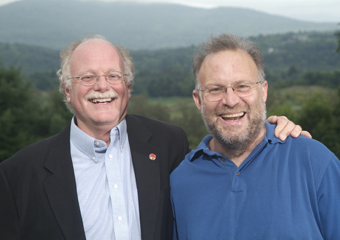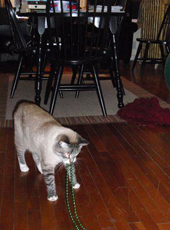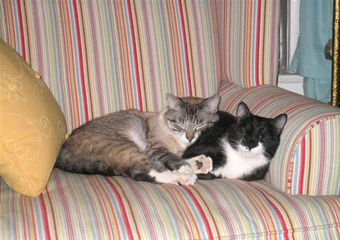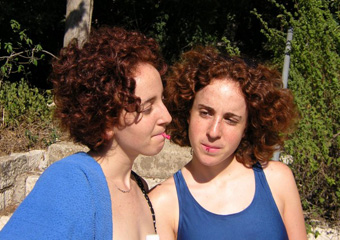
Stacey takes a break from sharing recipes to share her thoughts on Passover
Some of you may be wondering what I’m doing here in Living Jewishly. After all, I’m the self-proclaimed Food Jew, and this the Passover edition, and why the heck aren’t I over in NOSH where I belong, giving you sage advice on the perfect charoset or moderating the age-old floaters vs. sinkers Matzo Ball debate? I joke around about being Jew-ish, think that bacon should be its own food group, and openly admit that not only have I never been to Israel, it falls way down on my list of places I want to visit, after Morocco, Spain, Ireland and China, past Portugal and South Africa, even beyond places I want to go to for a second time like Italy. I’m reasonably certain I’ll get there, and I even genuinely believe I’ll be moved and transformed by the experience, its just, well, I sort of want to see Prague first.
But despite my cheek on the general subject of my Judaism, and despite the fact that I do (of course) have killer recipes for charoset and matzo kugel, I specifically asked the editors for a brief detour from the culinary aspect of our culture, and share my thoughts on Passover.
Passover has always been my favorite of the holidays. And not just because I got schickered on Manischiewitz wine when I was four. On first blush, you’d assume that it is because of the combination of food and ritual. I’m a sucker for food and ritual. When I was little, my two favorite meals to eat out were Geja’s Fondue and Ron of Japan Japanese steakhouse. Whether it was cooking my own meal in tiny cauldrons on long forks to the soundtrack of classical guitar in a basement grotto, or watching quick and skilled knife work as shrimp tails flew through the air, there was something utterly delightful about those meals. Entertainment, inclusion, the comforting progression that never alters in any meaningful sense, this was heady stuff. Seductive. So no wonder that the Seder, which isn’t just about eating, or just about praying, but is about using food as part and parcel of that prayer, is so appealing to that same part of me. Frankly, all it lacks is the guy juggling the salt shaker and making the onion volcano.
When I look at my life, the path I have taken in my career, the Passover Seder is essentially the culmination of everything I am passionate about. I am an educator, and the Seder is about teaching. I spent nearly a dozen years working in professional theater, and the Seder has wonderful theatrical moments, especially the “will he or won’t he” ta-da moment of opening the door for the possible entrance of Elijah. I’m a writer and storyteller, and the entire service is about telling an amazing story. I’m devoted to family and friends, and the Seder is about gathering those people around you. I try to live a life that embraces diversity, and there is no greater mitzvah at a Seder than the presence of Gentiles, the sharing of our culture. And, yes, I’m a foodie who loves to entertain, so any excuse to get into the kitchen and create a great meal is a pleasure and a privilege.
My dad is on the Board of Jewish Child and Family Services, a branch of Federation, and a couple of years ago they went through a strategic planning process, during which they attempted to identify a set of Core Jewish Values which would help drive the work of the agency, and the direction for the future. When he shared their findings with me, I was surprised by how moved I was by the content of what they came up with. How connected I felt to the way ancient Jewish teachings, of which I have never been a student, explore the way we ought to be in the world. I realized, as I absorbed the document he sent me, that ultimately what they chose to identify as core Jewish values, are simply a set of values that should be at the core of any person. That what they describe, while beautifully supported by Jewish writings and history, are the basic values I hold dear, the ideals that I hope are infused in the way I live my life, and are values that would find equal support in the writings and teachings of other religions and cultures. That in their specificity, we find universality. That in looking into what it means to be a Jew, we find what it means to be human, and instead of underlining our differentness, we illuminate our parity.
One of the things I have always loved about the Seder, what I love in fact generally about being Jewish, is the room to grow and expand and include. I have heard that in the mid-1980s, at a conference, the topic of women Rabbi’s was brought before a panel, and an elderly male Rabbi announced to the assembly that a woman had as much place on the Bimah as an orange has on the Seder plate. From that moment on, my family, like thousands around the world, have put an orange on our Seder plate, and have incorporated the story into our explanation of the sacred items it holds. We have added Miriam’s Cup, a glass cup filled with water, to remind us of the second side to the story we tell.
Sometimes, as a writer, you have to go seek the story; you have to go looking for the words. Sometimes, if you are lucky, the material comes to you when you least expect it. If you had told me a few years ago that I would ever write something specifically for inclusion in any religious ritual, I’d have thought you were nuts. This is ME, after all. But I know when inspiration strikes; you have to go with it. When I read the Core Jewish Values piece my dad sent me, it immediately called to me to be part of the Seder. By the time I read it through the second time, I was already shaping it in my mind. And within a half an hour I sent it to my family, asking for their thoughts, and if they would feel comfortable incorporating it into our Seder. We did, and I was amazed once again at how seamlessly something so new fit in with something so ancient. I shared it with a few friends, who reported that they too had used it in their services with positive response.
As we all get ready to celebrate Passover, however we each choose, I want to share with you all the piece which is now a part of my celebration. I hope that if it resonates with you, in part or in whole, that you will feel free to use it however you like. That if you find value in it, you will send it to your friends and family. (If you don’t want to copy and paste, click here for a downloadable document.) I hope that it may inspire you to create something for your own Seder, to continue to mold and shape your celebrations so that they are an accurate depiction of your own personal Jewishness. Or Jew-ishness. It is enormously gratifying to feel that no matter how secular I may choose to be, however far I get from traditional religiosity, there is room for the way I choose to practice, and I always feel genuinely embraced by my own culture.
I wish you all a happy Passover, and I promise, next time RECIPES! (And if you are having a true matzo ball crisis, shoot me a note, I’m happy to help…)






















.jpg)



